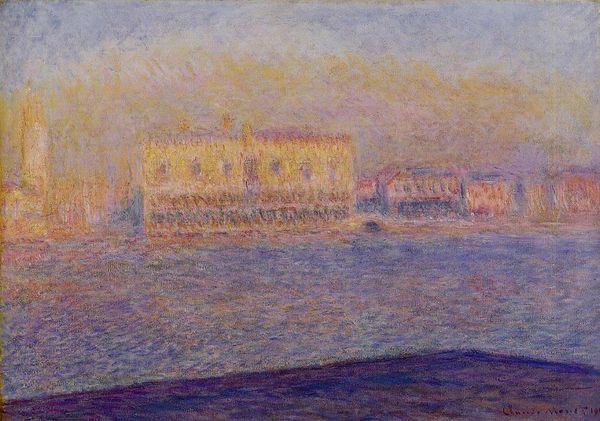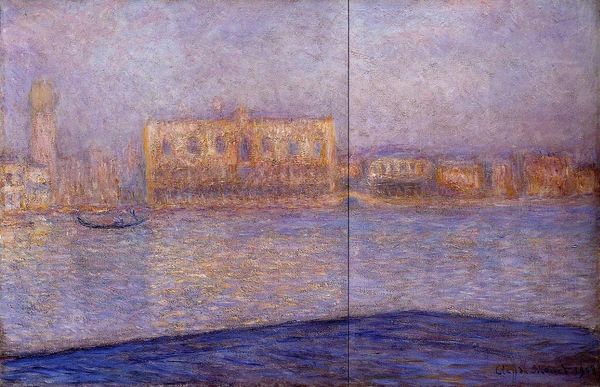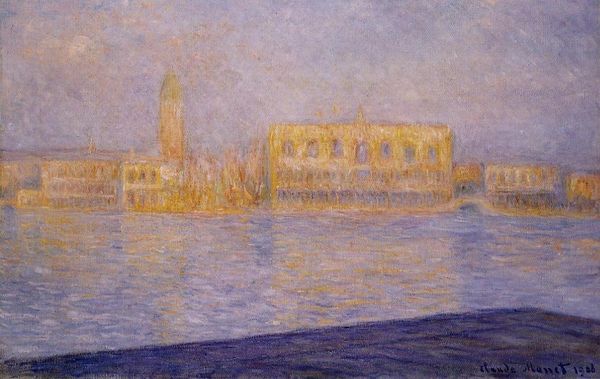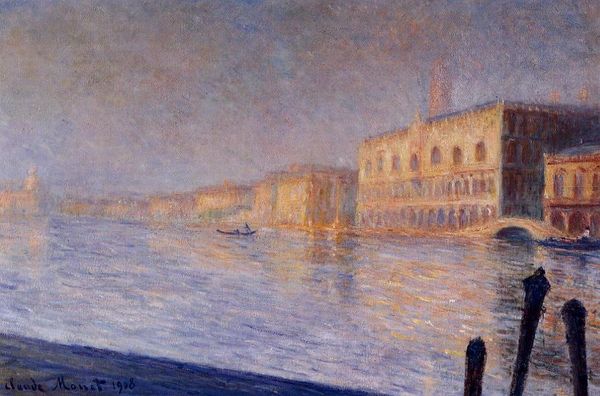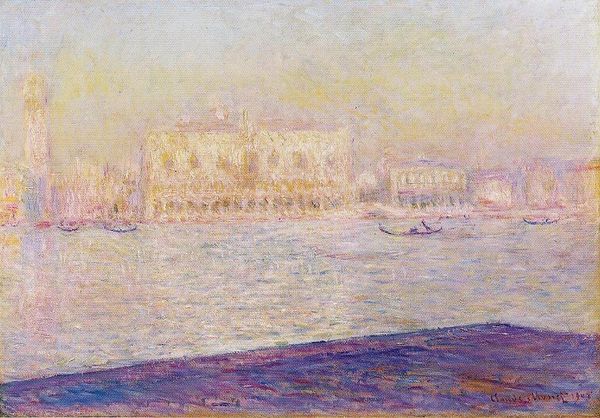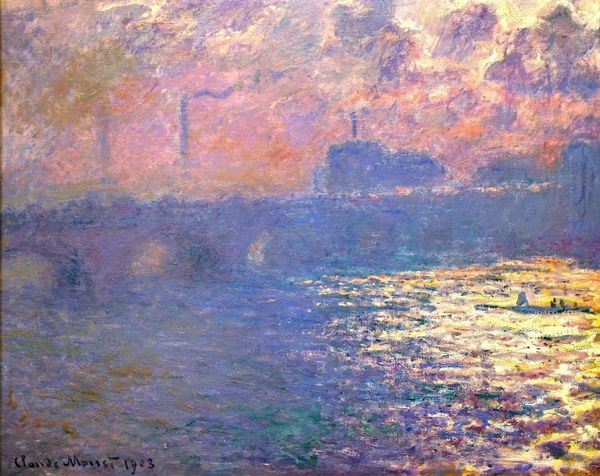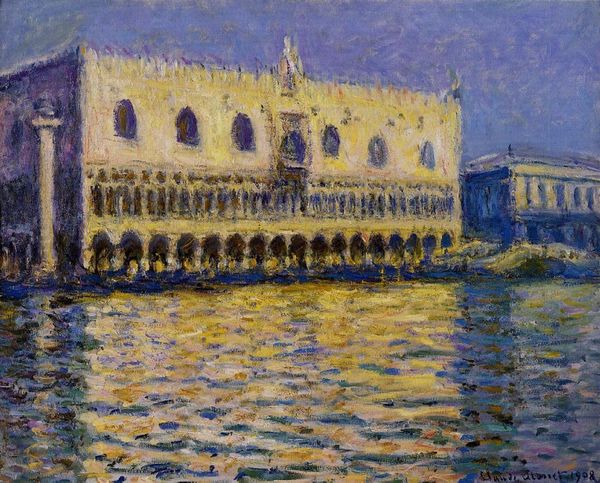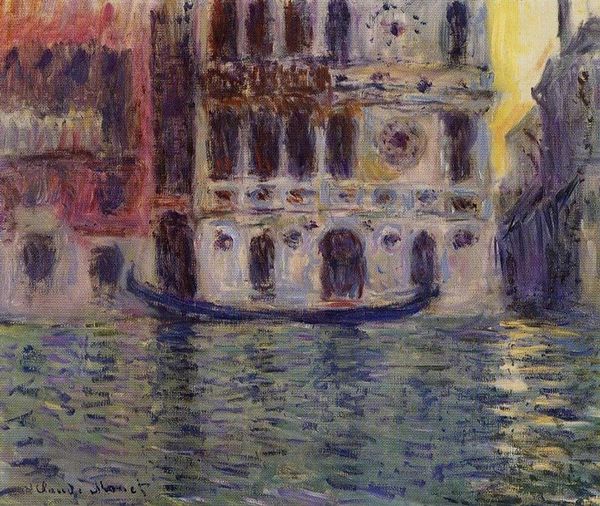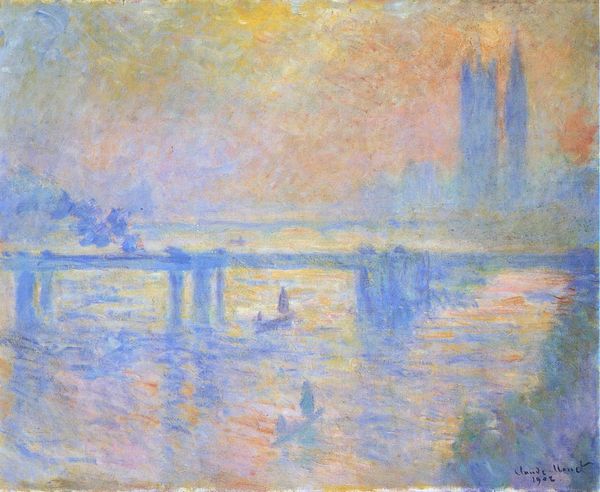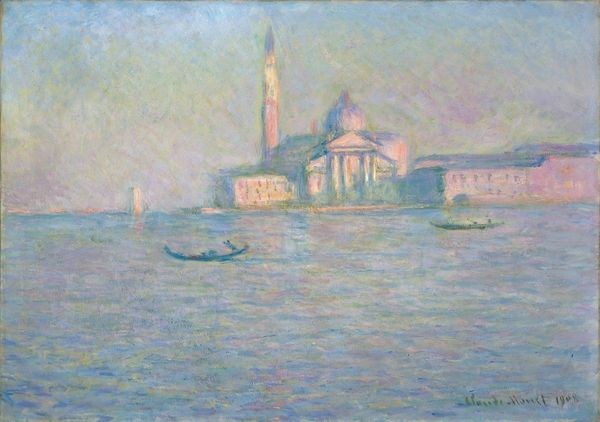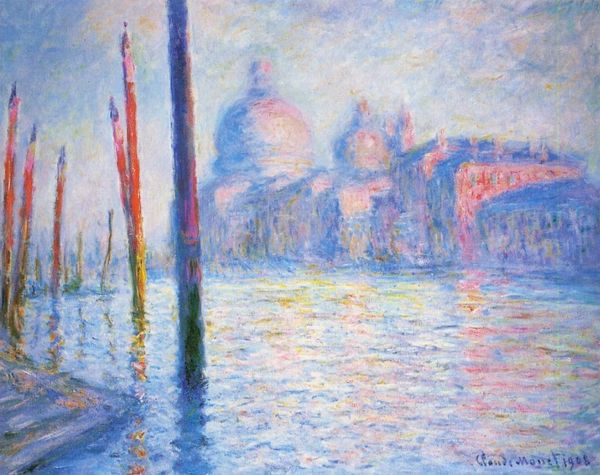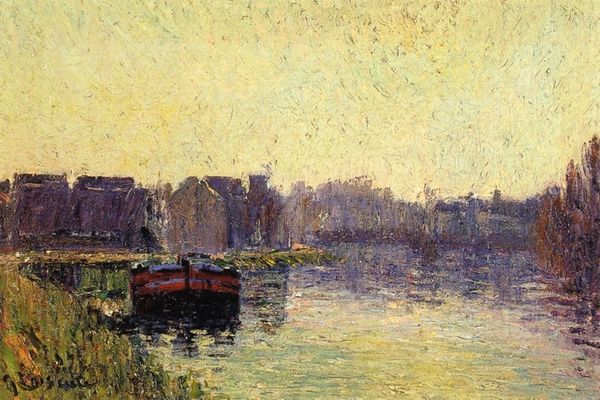
Copyright: Public domain
Curator: This is Claude Monet's "The Doges' Palace Seen from San Giorgio Maggiore," painted in 1908. Editor: It's ethereally hazy! Almost as if Venice is emerging from a dream. I'm struck by how the building feels secondary to the light itself. Curator: Monet really prioritized capturing light and atmosphere here. Look at the textured application of the oil paint; broken color creates a shimmer, and notice the repetitive marks--evidence of the artist's hand working swiftly across the canvas to translate that fleeting impression. Editor: The vantage point implicates issues of spectatorship. Where does Monet stand in relationship to this vista, and who can access this kind of opulent experience? Consider Venice as this highly coveted site, and what that represents for a European bourgeoisie and the dynamics of tourism shaping Venetian culture, then and now. Curator: Indeed, Venice provided endless possibilities for studying light reflected on water, and that became a key interest for Monet late in his career. Here, his specific methods – the paint, brushwork, canvas texture - transform the scene into pure sensory experience. Editor: While acknowledging the artist's technique, it's vital to remember Venice's long history of colonialism and its reliance on a workforce facing socioeconomic inequalities that persist into our contemporary moment. What’s so interesting about landscapes that sanitize such conditions of production and inequality, whether past or present? Curator: That's an insightful point. Still, his focus was the act of perception, and it is fascinating how that particular sensory experience then gets translated to the artwork and material. It asks the question how materials speak on their own. Editor: Ultimately, this image reveals something profound about the complexities inherent in artistic interpretation: that visual pleasure, social critique, and critical inquiry need not be mutually exclusive. Curator: Right, by analyzing the processes and considering historical and social context, one gains a far deeper understanding of the work's significance. Editor: Absolutely, it provokes us to engage in dialogue between what’s displayed versus what its conditions are, what's omitted versus what's implied, for an art history connected to contemporary reality.
Comments
No comments
Be the first to comment and join the conversation on the ultimate creative platform.
